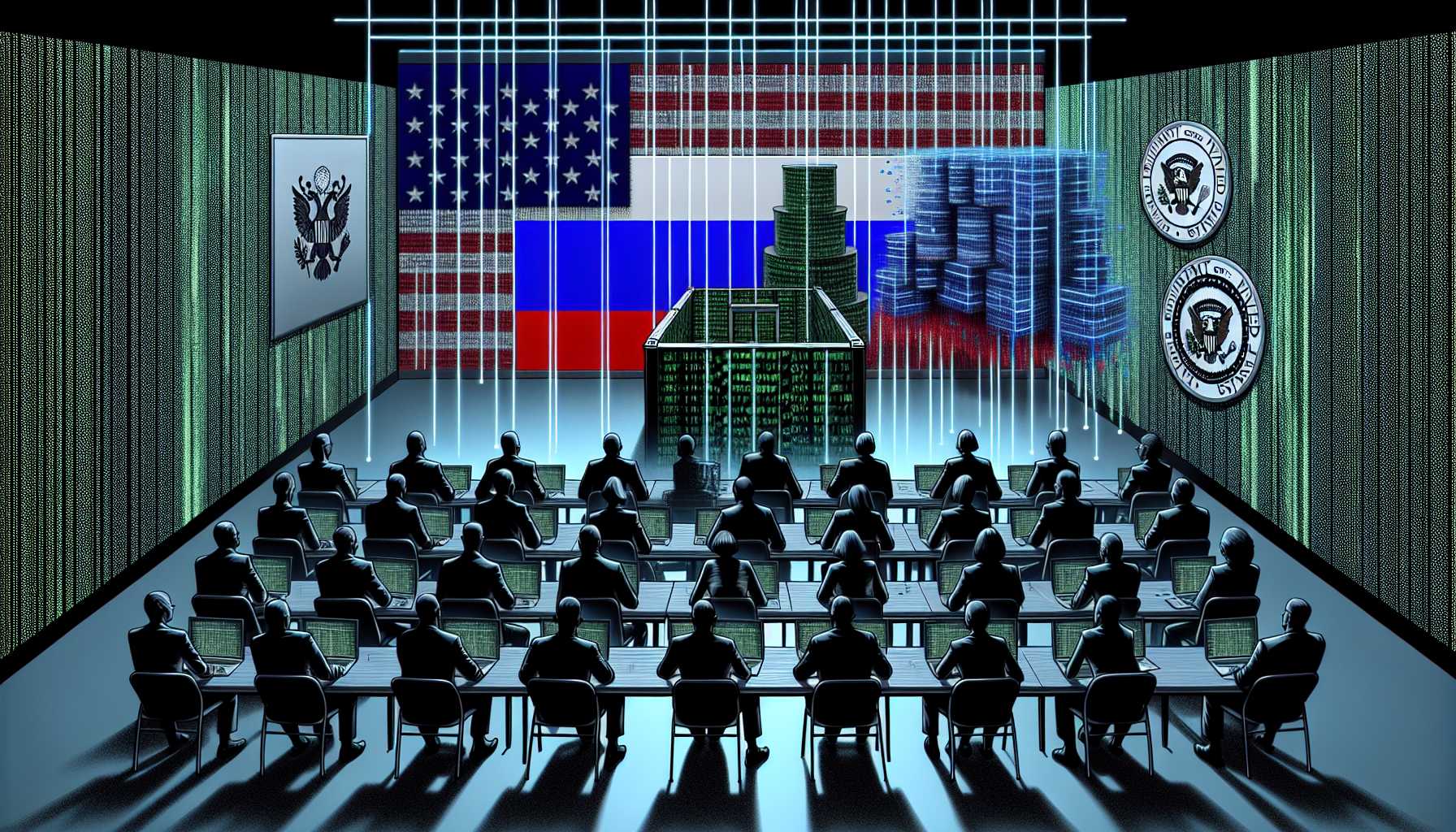From Cryptocurrency Heists to Digital Resilience: Decrypting the Week’s Tech News
1. Cryptocurrency Caper: A Cybersecurity Engineer’s $12 Million Crypto-Heist
The cybersecurity realm was rocked with a narrative befitting a cyber-thriller novel when Shakeeb Ahmed, a cybersecurity engineer, morphed into the antagonist in a $12 million crypto heist. Ahmed’s odyssey from a security sentinel to crypto-criminal culminated in a three-year prison sentence this past Friday, courtesy of the U.S. Attorney for the Southern District of New York.
Personal Opinion: As a tech investor, Ahmed’s descent into the cyber abyss isn’t just a stark reminder of the janus-faced potential within the tech industry; it represents a fundamental vulnerability in the rapidly growing cryptocurrency market. While blockchain promises an immutable ledger of transactions, human exploits remain a chink in the digital armor. The case underscores why my investments increasingly favor companies that build robust cybersecurity infrastructure.
Pushing the boundaries of ethical hacking, Ahmed’s plea deal brought to light a curious crypto-world phenomenon deemed ‘white hatting’—a morally gray zone where black hat tactics meet purported good intentions. However, let’s make no mistake, these escapades paint a bold target for global law enforcement. In Ahmed’s case, his virtual sleight of hand went beyond mere ‘pot-of-gold’ pilfering from Crema and Nirvana Finance; he attempted a daring negotiation, which, unfortunately for him, held no sway in court.
2. Clearing The Static: Roku Rolls Out Two-Factor Authentication Amid User Account Breaches
Meanwhile, across the digital landscape, another breach rippled through the customer bases of entertainment titan Roku. The streaming platform confessed to a credential stuffing attack that siphoned off user accounts into the hands of cyber miscreants. But here’s the silver lining—Roku’s proactive defense deployment in the form of two-factor authentication (2FA).
Personal Opinion: From a product management viewpoint, 2FA should have been an initial layer in Roku’s digital consortium. As streaming services grow, they collect troves of personal data, making them juicy targets for bad actors. My portfolio leans towards businesses that treat user security as a cornerstone of customer service, not an afterthought triggered by security mishaps.
Credential stuffing is a byproduct of our increasingly interconnected online lives—drama that unfolds when the same keys unlock multiple doors (read: reused passwords). It’s refreshing to see Roku tackle the incident head-on, even after two back-to-back incidents affecting an alarming number of users. This situation spins a cautionary verse for tech consumers: complex, unique passwords aren’t just an option—they’re an imperative.
3. Cyberpolice’s New Beat: Defending Ukraine in the Digital Battleground
As bullets and bombs explicitly claim the headlines, the silent war waging across servers and screens illuminates a different battlefield—one that Ukraine’s Cyberpolice are patrolling with renewed vigor and shifting strategies post-invasion.
Personal Opinion: Their work is more than mere cyber sleuthing; it’s a testament to the emerging dichotomy of warfare. Digital offensives are no longer parallel to ground confrontations; they’re embedded within them. This alters the investment lens through which I view tech stocks, particularly those providing the digital arsenal for such forms of warfare.
Yevhenii Panchenko’s cyber force adapts to the cyber resistance role, cracking Russian social media codes, tracking crypto-funding flows for warfare, and equipping civilians with cyber hygiene skills. Notably, their work feels less like a niche task force operation and more like setting a societal standard for resilience in cyberspace—an instructive playbook for other nations under digital siege.
4. Midnight Blizzard: Russian-Backed Hackers Shatter U.S. Federal Email Security
In an alarming revelation, the U.S. Cybersecurity and Infrastructure Security Agency (CISA) shed light on a breach that allowed Russian government-backed hackers—dubbed Midnight Blizzard—to infiltrate federal emails through compromised Microsoft accounts.
Personal Opinion: It’s challenging not to view this breach as a critical black eye for a tech behemoth such as Microsoft. Particularly for a tech investor, incidents like these ring alarm bells on due diligence regarding a company’s security measures. The scrutiny isn’t unwarranted, as trust in tech becomes synonymous with the assurances of cybersecurity.
While the exploited vulnerabilities propagate anxiety across the tech realm, the fervent response of issuing immediate directives to fortify their email accounts stands as a vital lesson in not only rebounding from cyber adversities but leaping forward with reinforced vigor.
5. The Ethereal Battle of Data Center Networking: Arista vs. Nvidia
Let’s swivel our lens to a showdown shaping up not in the cyber trenches but amidst the clouds of artificial intelligence-driven data center networking. Arista Networks’ purported growth in AI data center solutions finds itself in a game of technological chess against Nvidia’s strategic positioning in the market.
Personal Opinion: Investing in technology often feels like aligning with the giants, yet I’ve learned that David can sometimes offer a compelling narrative against Goliath. Nvidia’s might and market presence are formidable, but the courage lies in not discounting Arista’s potential in carving niches of innovation that could appeal to AI’s future needs.
While the analyst’s downgrade of Arista stock may ruffle some portfolios, it opens a segway into discussing how diversification—not just in asset types but in technological realms—could set a path for groundbreaking returns.
6. AI’s New Linguistic Maverick: ChatGPT Plus Flexes with GPT-4 Turbo Upgrade
Finally, we tap into the AI advancements as OpenAI boosts the linguistic prowess of ChatGPT with GPT-4 Turbo. The large language model takes a step closer to human conversation, promising terser responses with uncanny conversational tones for its paying fleet of users, revealing a tantalizing preview of artificial intelligence’s evolutionary trajectory.
Personal Opinion: This tech leap fascinates not just as an end user but from an investment standpoint. The ability for AI to crisply navigate human discourse without losing nuance is a frontier replete with potential—be it in formulating market analyses or creating interactive customer service avatars. The AI developmental race continues to be worthy of investment consideration.
In a week occasionally overshadowed by cyber gloom, it’s the strides in digital safeguards, the relentless hunt for tech innovation, and AI’s tantalizing progression that ignite a beacon of resolute optimism, captivating the tech-enthusiast and shrewd investor within us all.






